A labyrinth of damask roses, all arranged along a circular path, similar to that of the labyrinth in Chartres Cathedral, with rows, however, that are arranged all around to create like rays, an image reminiscent of that of the sun: this is the labyrinth of the Castle of Cordovado, not far from Pordenone, Friuli. The castle arose in the Middle Ages on the site of a Roman castrum that guarded the Via Claudia Augusta, which started from Altino and ran as far as Trent, then continued northward over the Alps and southward to Hostilia, present-day Ostiglia, in the Mantua area. The castle was located on the border of the Patriarchate of Concordia Sagittaria, near the Tagliamento River, and was managed by the bishops of Concordia, who entrusted it to the Ridolfi family: they were responsible for the castle for a long time. Later, in the 16th century, ownership passed to the Counts d’Attimis and then, two centuries later, to the Freschi di Cucanea family. It was a member of the family, Sigismondo Freschi, who created the park surrounding the castle in the early 19th century. The park was later cared for by descendants, beginning with Sigismondo’s son Antonio, who made the castle, by then transformed into a mansion, a center frequented by intellectuals, especially musicians. His wife Carlotta, a talented pianist, had the idea of planting the first roses in the park: since then, the tradition of cultivating this beautiful flower has never waned.
After World War II, Cordovado Castle passed through heredity to Nicoletta Freschi, wife of Count Lorenzo Piccolomini Clementini Adami, a descendant of the Piccolomini family of Siena that gave the Church two popes. Still today it is the Piccolomini heirs who take care of the management of the castle, which includes a small hamlet, included in the list of “Italy’s Most Beautiful Villages” (a small medieval church is also located here), and is surrounded by the lush garden. The castle today looks more like a Renaissance mansion than a medieval manor, but it still bears witness to centuries and centuries of history.
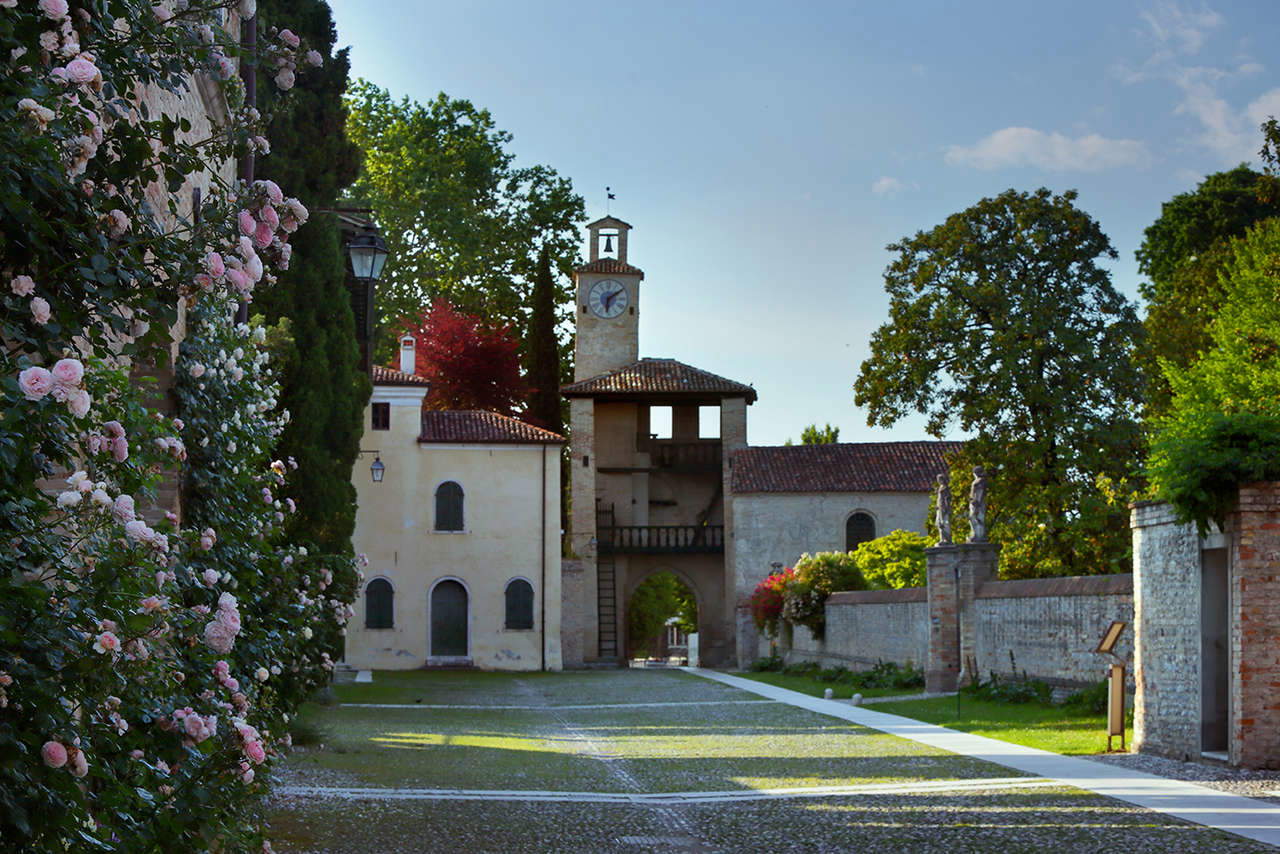
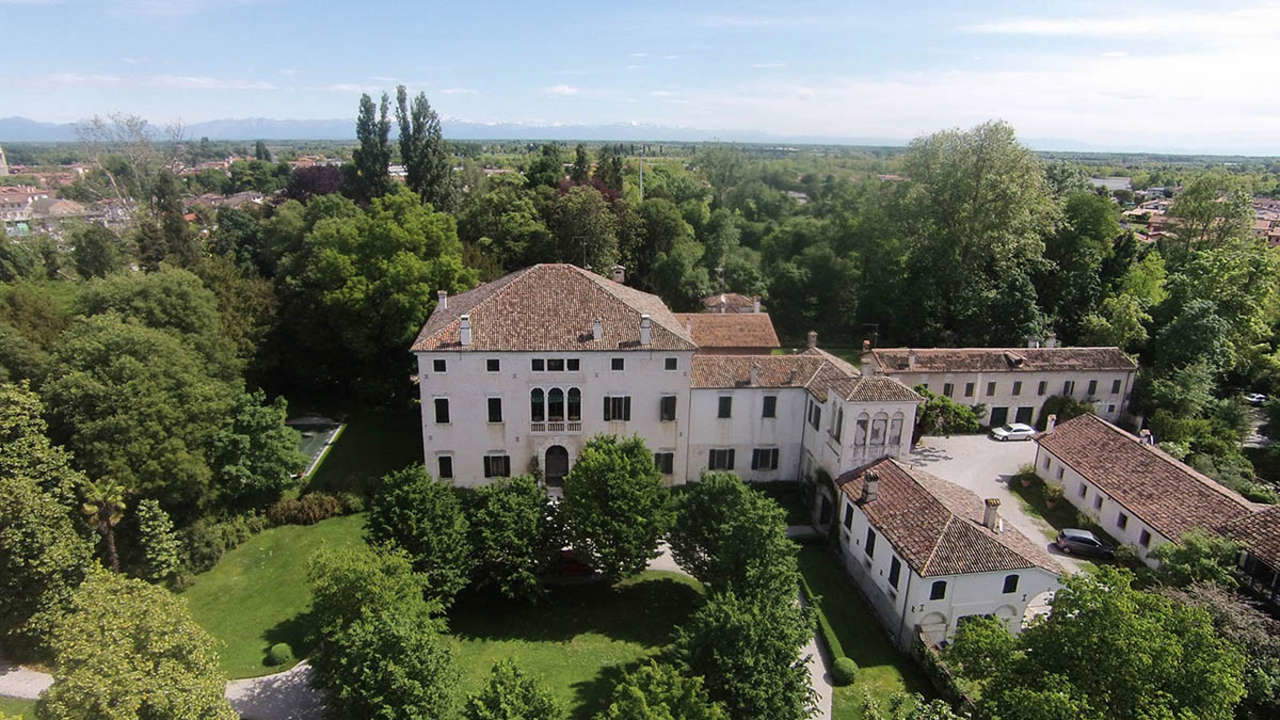
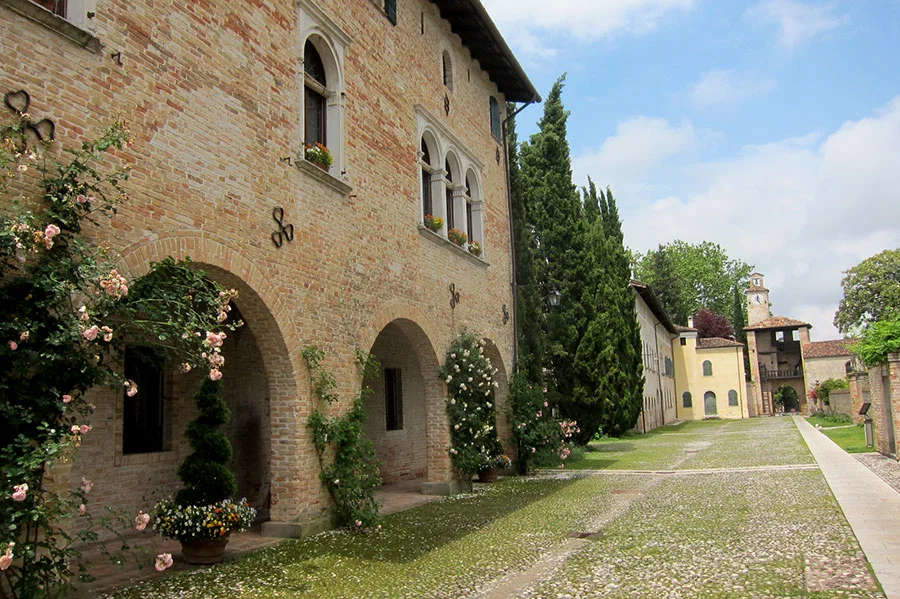
Precisely because of the flower that distinguishes it, the Castle of Cordovado is also known as the “Castle of Roses”: there are so many species that can be found in the garden, but it is the Damask rose, as anticipated, that shows off its thousands of flowers in the labyrinth. Also known as the “Damask Rose,” or “Castilian Rose,” it belongs to the rose family and is one of the most prized and valued varieties of roses. Native to Syria, hence the name, it is cultivated, in shrubs that reach a height of between one meter and two meters, mainly for its flowers, which are used to produce essential oil and rose water: it has deep pink flowers that can vary from light pink to dark red. The petals are numerous and delicate, often with a velvety texture, and are even edible, given their delicate aroma (they are also used to prepare herbal teas). The Damask rose is also famous for its intense, sweet scent, considered among the finest and most complex in the rose world.
Contrary to what one might think, the labyrinth of the Cordovado Castle does not have ancient origins: in fact, it was born in 2015, as part of the 19th-century park restoration project initiated by Benedetta Piccolomini, the current owner of the site. The noblewoman, endowed with a great passion for nature and botany, upgraded the park, transforming it into a true therapeutic garden, a “place,” writes Giancarlo Pavat in his Guida curiosa ai labirinti d’Italia, “where nature becomes accessible to all those who have difficulties in movement, feeling, seeing or even in spirit and mind. A place where it is possible to approach plants with ease, to touch fragrant essences, to become intoxicated with sunshine and scents and also to be able to pick some fruit, or seed or flower, to admire some seasonal flowers or simply to follow the growing and blooming and fading.”
The labyrinth was designed so that “you can get lost in the scent of roses and find your own harmony,” said Benedetta Piccolomini. Accordingly, the layout is designed to make those who meander along the meanders relax : there are no dead ends, no closed roads, no going back to the starting point, no pitfalls to divert from the path or produce anxiety among visitors. In fact: it is the opposite. It is a walk, in essence. A walk that must produce calmness, serenity. The rose as the essence that accompanies the visitors’ walk was chosen after Benedetta Piccolomini attended a lecture in which roses were discussed according to the great German writer Johann Wolfgang Goethe, who made the five petals of the rose flower coincide with the sides of Agrippa’s pentagram (from which Leonardo da Vinci’sVitruvian Man also descends), and consequently the rose would become the very symbol of harmony on earth.
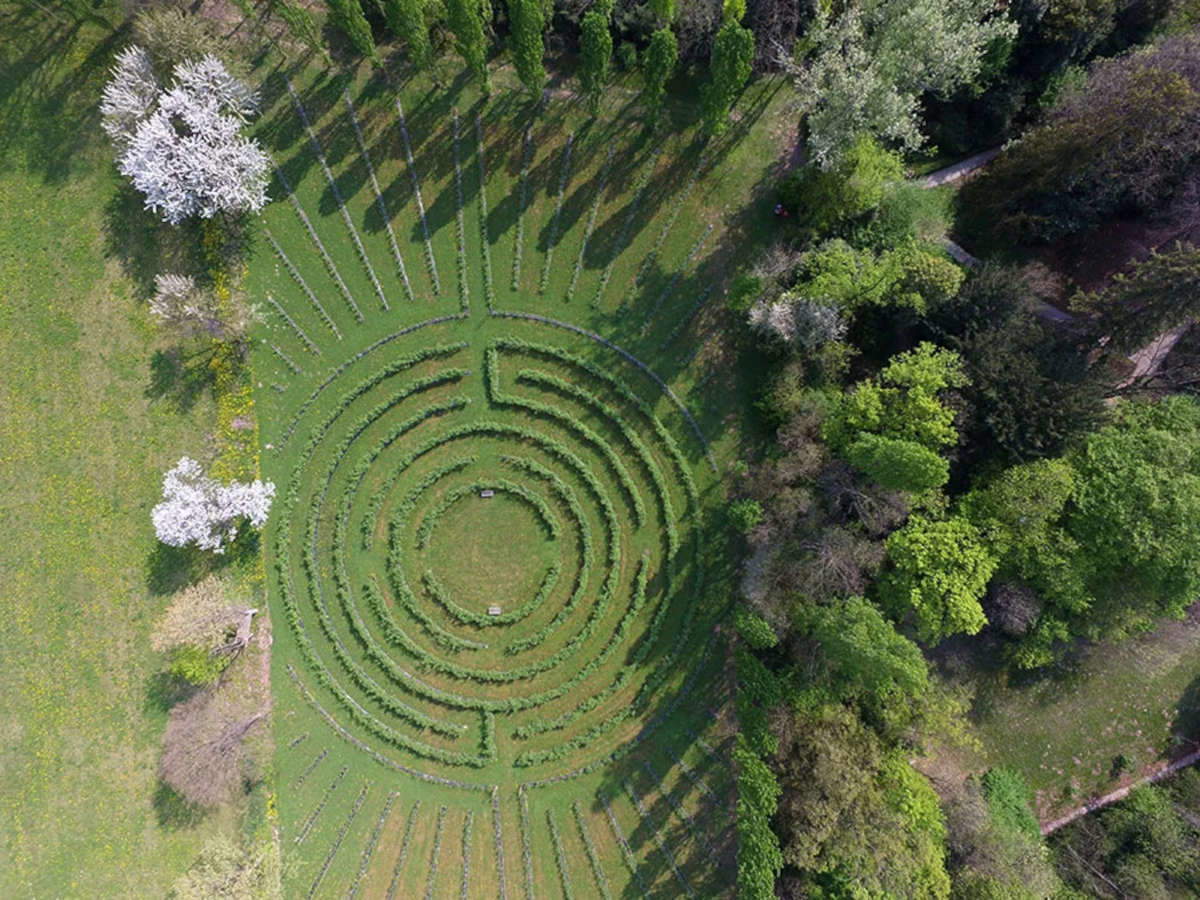
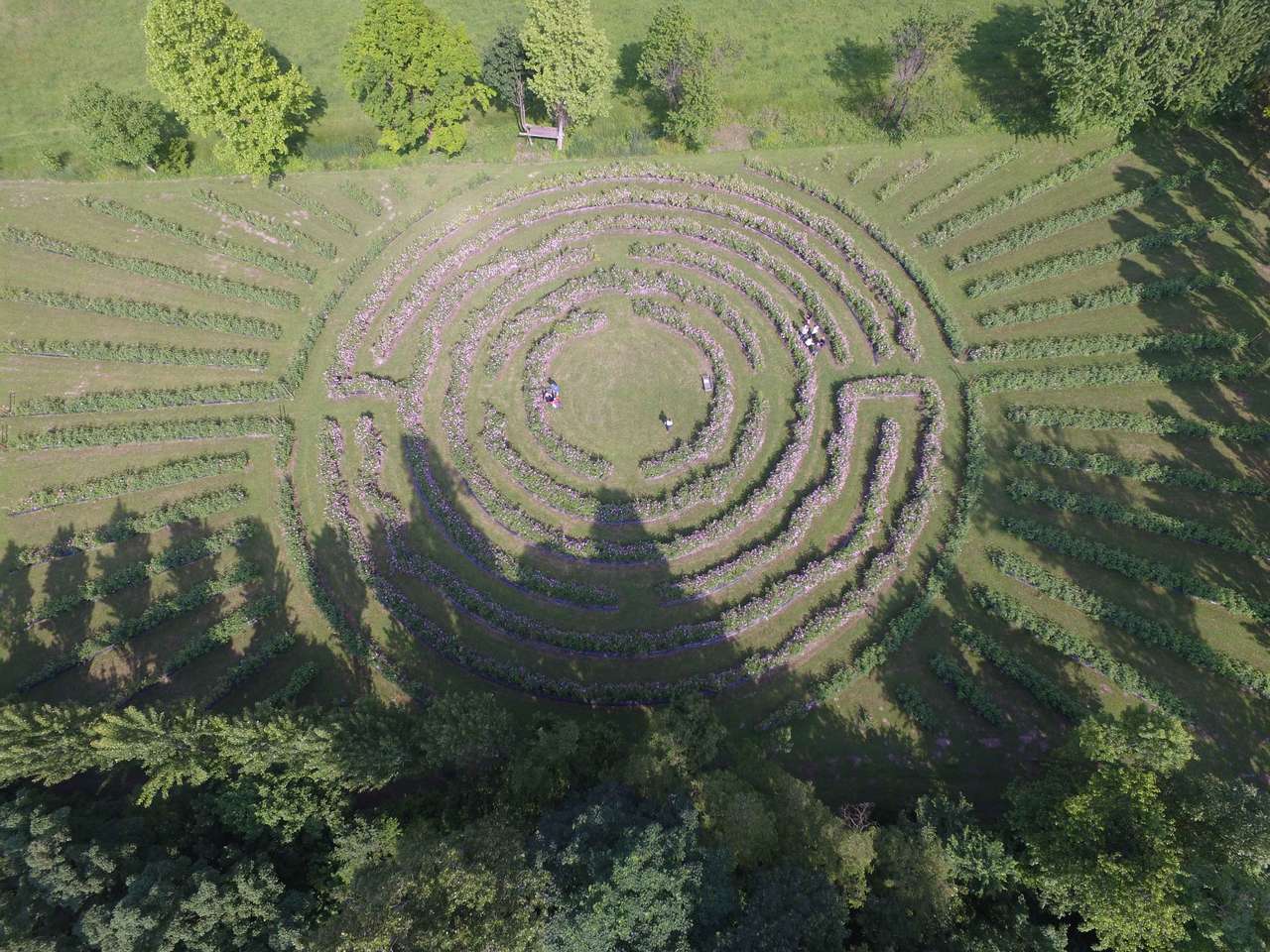
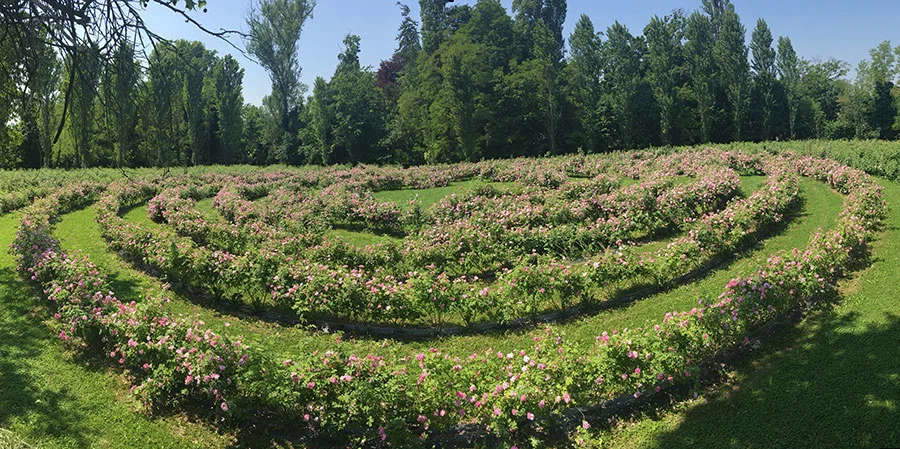
To be able to try walking the labyrinth at the best time of the year, that is, when the roses are at the peak of their bloom and their scent is most intense, you need to travel to Cordovado between May and June: the castle also organizes a festival dedicated to roses for the occasion: lectures, guided tours, readings, exhibitions, sensory paths, knowledge days on flowers and animals, and documentary screenings are just some of the activities that enliven the castle during the festival but also during the rest of the year. In addition, the castle (which has been part of the Great Italian Gardens network for some time now) is also home to an emporium, “Se son rose,” where you can buy genuine products made from the delicate flower grown here.
Cordovado Castle and its garden are a must-see destination for those who love history, nature and wellness. It is a place where the past and natural beauty blend harmoniously, offering an unforgettable experience to anyone who visits. Walking among the roses in the garden, breathing in their scent and immersing oneself in the quiet of the castle is an experience that regenerates body and mind. And it is in this spirit, after all, that the park has been reborn.
 |
| The labyrinth of the Cordovado Castle, where you can walk in the scent of roses |
Warning: the translation into English of the original Italian article was created using automatic tools. We undertake to review all articles, but we do not guarantee the total absence of inaccuracies in the translation due to the program. You can find the original by clicking on the ITA button. If you find any mistake,please contact us.